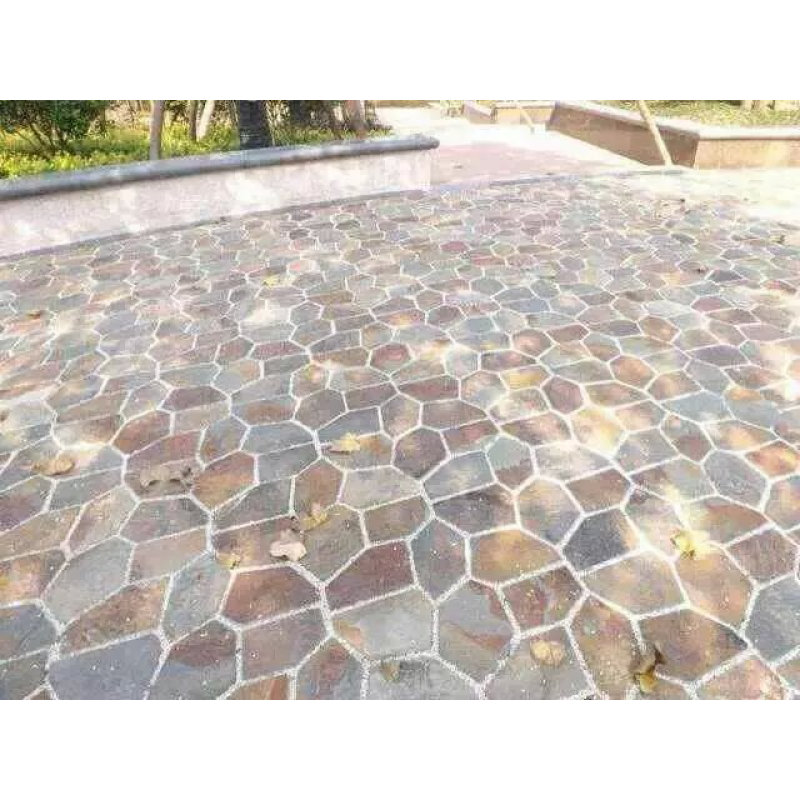The Enigma of Split Face Stone A Journey into Architectural Mastery
In the realm of architecture and design, split face stone stands as a testament to human ingenuity and the timeless allure of natural materials. This intriguing construction element, with its rugged texture and organic appeal, has been employed for centuries, lending a unique character to structures that transcend the ordinary.
Split face stone, as the name suggests, is created by splitting natural stone along its grain or bedding plane, revealing a rough, textured surface that exudes an earthy charm. The process, often manual, involves skilled craftsmanship and a deep understanding of the stone's properties, making each piece a one-of-a-kind masterpiece. It's this very irregularity that gives split face stone its distinctive appeal, making it a favorite among architects seeking to imbue their designs with a sense of authenticity and depth.
The use of split face stone dates back to ancient civilizations where it was used in monumental structures like the Great Wall of China and the Egyptian pyramids. Its durability and resistance to weathering made it an ideal choice for enduring edifices. Today, it continues to be a prominent feature in modern architecture, adorning facades, walls, and interiors alike, offering a striking contrast to sleek, contemporary designs.
One of the most captivating aspects of split face stone lies in its ability to play with light. The uneven surface absorbs and reflects light in a way that creates a dynamic interplay of shadows and highlights, transforming the stone's appearance throughout the day The uneven surface absorbs and reflects light in a way that creates a dynamic interplay of shadows and highlights, transforming the stone's appearance throughout the day

The uneven surface absorbs and reflects light in a way that creates a dynamic interplay of shadows and highlights, transforming the stone's appearance throughout the day The uneven surface absorbs and reflects light in a way that creates a dynamic interplay of shadows and highlights, transforming the stone's appearance throughout the day
 split face stone
split face stone. In daylight, it gleams with a rustic warmth, while under artificial light, it casts a soft, moody glow, adding a layer of sophistication to any space.
Furthermore, split face stone is not just visually appealing; it also offers environmental benefits. As a natural material, it has a low carbon footprint and is sustainable, making it an eco-friendly option in the construction industry. Its thermal mass properties also contribute to energy efficiency, absorbing and storing heat during the day and releasing it at night, thereby regulating indoor temperatures.
In conclusion, split face stone is more than just a building material; it's a narrative etched in time. It tells a story of craftsmanship, resilience, and the harmonious coexistence of man and nature. Whether it's a grand public edifice or a cozy residential retreat, split face stone adds a touch of rustic elegance and a sense of history, making it a cherished element in architectural design. Its enduring appeal lies in its ability to create spaces that are both visually stunning and environmentally conscious, a testament to the enduring power of nature's beauty and human creativity.

 The uneven surface absorbs and reflects light in a way that creates a dynamic interplay of shadows and highlights, transforming the stone's appearance throughout the day The uneven surface absorbs and reflects light in a way that creates a dynamic interplay of shadows and highlights, transforming the stone's appearance throughout the day
The uneven surface absorbs and reflects light in a way that creates a dynamic interplay of shadows and highlights, transforming the stone's appearance throughout the day The uneven surface absorbs and reflects light in a way that creates a dynamic interplay of shadows and highlights, transforming the stone's appearance throughout the day split face stone. In daylight, it gleams with a rustic warmth, while under artificial light, it casts a soft, moody glow, adding a layer of sophistication to any space.
Furthermore, split face stone is not just visually appealing; it also offers environmental benefits. As a natural material, it has a low carbon footprint and is sustainable, making it an eco-friendly option in the construction industry. Its thermal mass properties also contribute to energy efficiency, absorbing and storing heat during the day and releasing it at night, thereby regulating indoor temperatures.
In conclusion, split face stone is more than just a building material; it's a narrative etched in time. It tells a story of craftsmanship, resilience, and the harmonious coexistence of man and nature. Whether it's a grand public edifice or a cozy residential retreat, split face stone adds a touch of rustic elegance and a sense of history, making it a cherished element in architectural design. Its enduring appeal lies in its ability to create spaces that are both visually stunning and environmentally conscious, a testament to the enduring power of nature's beauty and human creativity.
split face stone. In daylight, it gleams with a rustic warmth, while under artificial light, it casts a soft, moody glow, adding a layer of sophistication to any space.
Furthermore, split face stone is not just visually appealing; it also offers environmental benefits. As a natural material, it has a low carbon footprint and is sustainable, making it an eco-friendly option in the construction industry. Its thermal mass properties also contribute to energy efficiency, absorbing and storing heat during the day and releasing it at night, thereby regulating indoor temperatures.
In conclusion, split face stone is more than just a building material; it's a narrative etched in time. It tells a story of craftsmanship, resilience, and the harmonious coexistence of man and nature. Whether it's a grand public edifice or a cozy residential retreat, split face stone adds a touch of rustic elegance and a sense of history, making it a cherished element in architectural design. Its enduring appeal lies in its ability to create spaces that are both visually stunning and environmentally conscious, a testament to the enduring power of nature's beauty and human creativity.